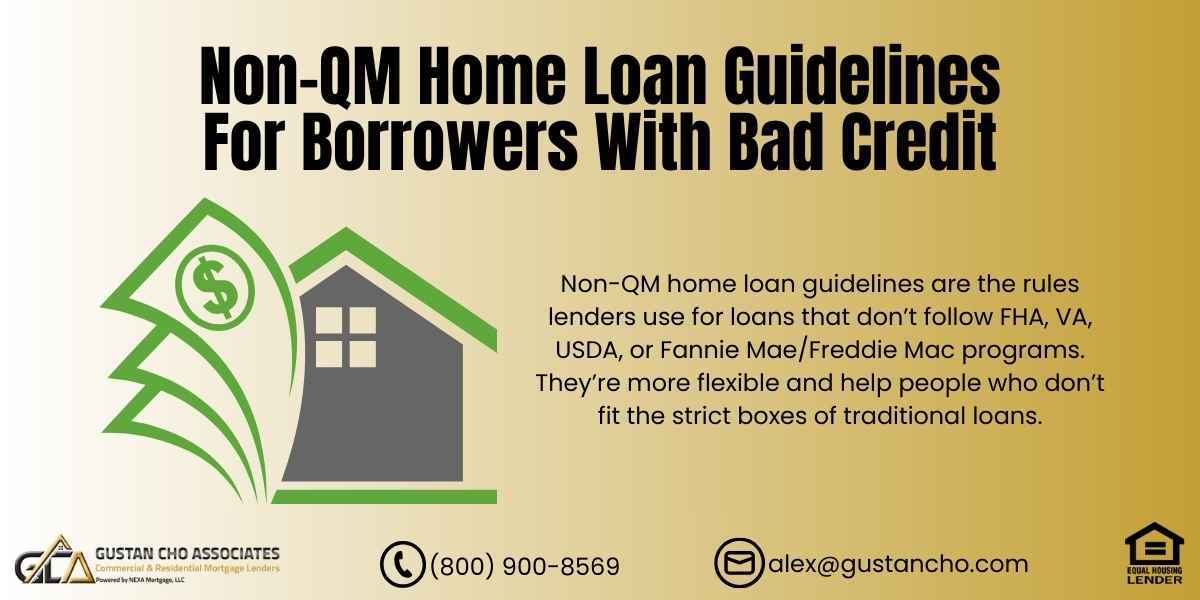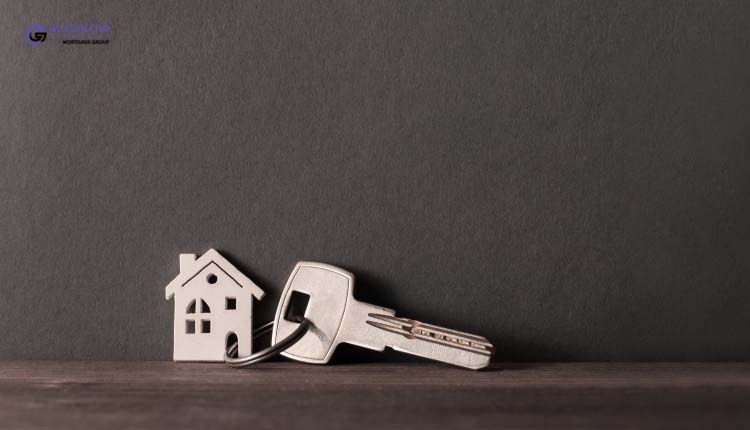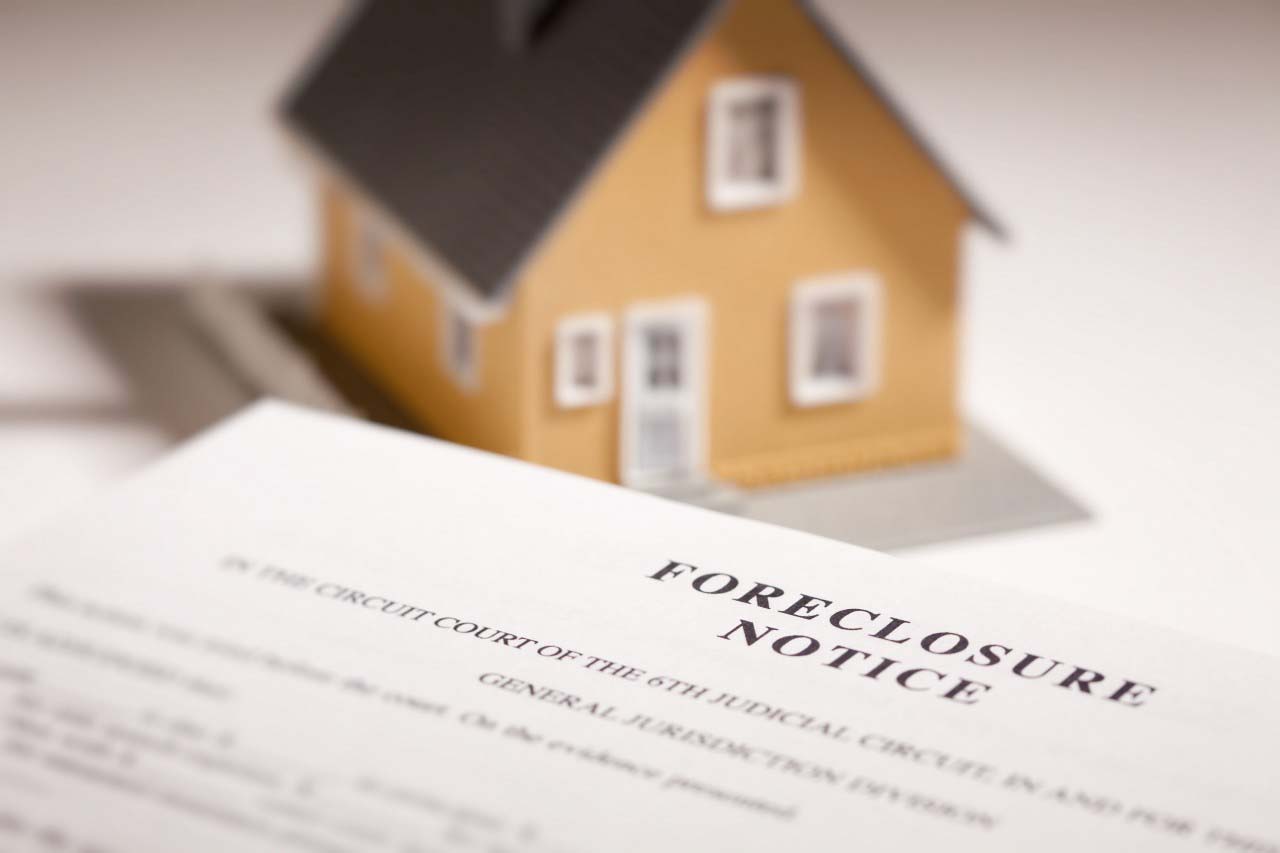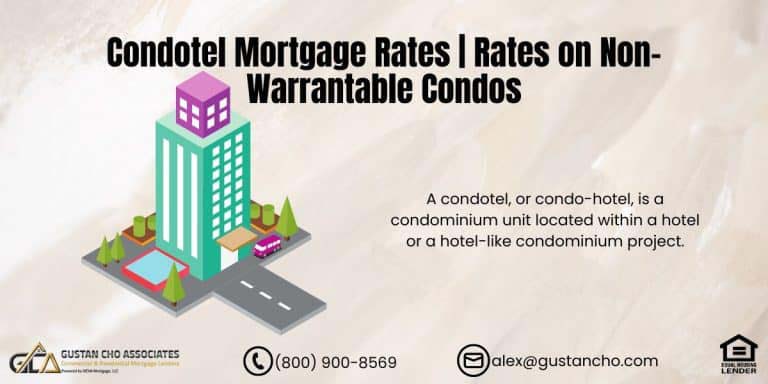NON-QM Home Loan Guidelines: 2025 Guide to Buying After Denial
Buying a home isn’t always easy when your credit, income, or history doesn’t fit traditional loan rules. That’s where non-QM home loan guidelines step in. These flexible mortgage options are designed for real people with real-life situations—whether you’re self-employed, dealing with high debt, or recovering from a foreclosure or bankruptcy. In this guide, we’ll explain everything you need to know about non-QM home loan guidelines in 2025, how they work, and how Gustan Cho Associates can help you qualify when other lenders say no.
What Are NON-QM Home Loan Guidelines?
If you’ve ever been turned down for a mortgage, you know how crushing it feels. Maybe it was bad credit, high debt, a recent foreclosure, or tax returns that didn’t show your actual income. This can cause problems throughout the entire process. Resulting in you losing earnest money, money for inspections, and money for the appraisal. That’s where non-QM home loan guidelines come in.
A non-QM loan (non-qualified mortgage) is a home loan that does not follow the strict rules set by FHA, VA, USDA, Fannie Mae, or Freddie Mac. Instead, these programs are designed to help borrowers who don’t fit into the “perfect box.”
At Gustan Cho Associates, we specialize in non-QM loans. Our team helps buyers and homeowners every day who were denied by banks, credit unions, and retail lenders. With us, you can get approved even if you thought homeownership was out of reach.
Bad Credit? You Still Have Mortgage Options
Non-QM home loan guidelines make it possible for buyers with low scores to qualify.
Why Non-QM Home Loan Guidelines Matter in 2025
Traditional lenders often say “no” if your credit, income, or history isn’t picture-perfect. But real life is messy. People lose jobs, go through a divorce, face medical bills, or take advantage of legal tax write-offs.
Non-QM home loan guidelines exist to help real borrowers in real-world situations, such as:
- Credit scores below 620
- Recent foreclosure, short sale, or bankruptcy
- High debt-to-income (DTI) ratios
- Self-employed income with too many tax deductions
- Borrowers using bank statements instead of W-2s
- Foreign nationals buying property in the U.S.
The bottom line? Non-QM mortgages open the door to homeownership when traditional rules slam it shut.
Key NON-QM Home Loan Guidelines for 2025
Here’s what you need to know about non-QM home loan guidelines this year:
- Credit Scores: Many programs allow scores down to 500–580, sometimes lower.
- Down Payment: 10%–30% depending on the program, property, and credit.
- Debt-to-Income (DTI): More flexible than QM loans; some programs go up to 55% or even allow “no ratio” loans.
- Income Documentation: Alternatives include bank statements (12–24 months), CPA profit & loss statements, or asset depletion.
- Waiting Periods After Foreclosure/Bankruptcy: There are no mandatory waiting periods; with certain programs, you can buy one day out of foreclosure or bankruptcy.
- Property Types: Primary homes, second homes, investment properties, condotels, non-warrantable condos, and multi-units are often allowed.
These non-QM home loan guidelines vary by lender and investor, but at Gustan Cho Associates, we work with over 210 wholesale mortgage lenders, giving you access to the broadest options.
Comparison: QM vs Non-QM Home Loan Guidelines (2025)
| Feature | QM Loans (FHA, VA, Conventional, USDA) | Non-QM Loans |
|---|---|---|
| Credit Score | Typically 620+ (FHA down to 580) | Programs allow 500–580, sometimes lower |
| Down Payment | 3%–5% for Conventional, 3.5% for FHA | 10%–30% depending on credit & property |
| Debt-to-Income (DTI) | Max 43%–50% | Up to 55% or even “no ratio” programs |
| Income Documentation | W-2s, tax returns, pay stubs | Bank statements (12–24 months), CPA P&L, asset depletion |
| Waiting Period After Bankruptcy | FHA: 2 yrs (Ch 13) / 3 yrs (Ch 7) VA: 2 yrs Conventional: 4–7 yrs |
As little as 1 day out of bankruptcy or foreclosure |
| Property Types Allowed | Primary homes (investment allowed with Conventional) | Primary, second homes, investment, condotels, non-warrantable condos, multi-units |
| Who Benefits Most | Borrowers with strong credit & stable W-2 income | Self-employed, bad credit, recent foreclosure/bankruptcy, investors, foreign nationals |
Types of NON-QM Home Loans Available
Not all non-QM loans are the same. Here are the most common programs and how their guidelines work:
Bank Statement Loans for Self-Employed Borrowers
Bank statement loans are a good choice for self-employed people who can show their income using 12 to 24 months of bank statements. These loans are helpful for business owners, freelancers, and 1099 workers because they avoid the trouble of using tax returns.
Debt Service Coverage Ratio (DSCR) Loans for Investors
Debt Service Coverage Ratio (DSCR) loans for investors make it easier to get approved because they look at rental income that can cover the mortgage payments. A big plus of these loans is that you don’t have to verify your personal income, which is great for real estate investors who want to finance their properties without the hassle of typical income checks.
No-Ratio or Asset Depletion Loans
No-ratio or Asset Depletion Loans are unique financing options where traditional income verification is not required. Instead of relying on income, these loans use the borrower’s assets—such as savings, retirement accounts, and investments—to establish qualification. This type of loan is particularly popular among retirees and high-net-worth individuals who may prefer to leverage their assets instead of providing standard income documentation.
ITIN and Foreign National Loans
Loans designed for borrowers without a Social Security number are now available, accepting ITINs, passports, or visas. These loans are particularly beneficial for international buyers looking to purchase property in the United States.
Each has unique non-QM home loan guidelines, and Gustan Cho Associates matches you with the program that best suits your situation.
Don’t Let Credit Hold You Back
Learn how Non-QM loan programs work for borrowers with bad credit.
NON-QM Home Loan Guidelines on Foreclosure and Bankruptcy
One of the most significant benefits of non-QM home loan guidelines is how they handle major credit events.
- FHA requires 3 years after foreclosure.
- VA requires 2 years.
- Fannie Mae/Freddie Mac requires 7 years.
- NON-QM? You can buy a house just one day after foreclosure, short sale, or bankruptcy.
This flexibility saves families years of waiting and helps them rebuild homeownership faster.
NON-QM Home Loan Guidelines for Student Loans
Student loans can destroy your debt-to-income ratio under FHA and Conventional rules. FHA counts 1% of the balance, even if your payment is $0 on an income-driven plan.
Under various non-QM home loan guidelines, it is possible to disregard deferred student loans that have been in forbearance for over 12 months. Additionally, some lenders may permit using income-based repayment plans when evaluating loan applications.
This simple difference can mean the difference between denial and approval.
NON-QM Home Loan Guidelines for Self-Employed Borrowers
More than 16 million Americans are self-employed. But tax write-offs make their “paper income” look too low for a traditional loan.
Non-QM home loan guidelines allow self-employed borrowers to qualify using:
- 12–24 months of bank statements.
- CPA-prepared P&L statements.
- Business account analysis.
This makes homeownership possible without giving up legitimate tax deductions.
NON-QM vs QM: What’s the Difference?
When comparing non-QM home loans to traditional QM loans, it’s important to know how they differ in their rules. QM loans have strict requirements regarding income, credit scores, and debt-to-income (DTI) ratios, which means there aren’t many exceptions for borrowers.
These tough standards are designed to ensure that loans go to people who are less likely to default, giving lenders a bit more security.
On the flip side, non-QM loans are way more flexible when it comes to getting approved. They look at each situation individually, allowing for more risk tolerance. This means non-QM loans can help a wider variety of borrowers with different financial situations. While QM loans put borrowers in a tight box, non-QM loans expand the possibilities for those who find it hard to qualify.
Who Should Consider a NON-QM Loan?
You may benefit from non-QM home loan guidelines if:
- You were denied by a bank or retail lender.
- You are self-employed with heavy tax write-offs.
- You had a recent foreclosure, short sale, or bankruptcy.
- You have high credit card balances or DTI.
- You’re buying an investment property or second home.
- You are a foreign national or ITIN borrower.
Steps to Start the NON-QM Loan Process
Getting started with a non-QM loan is simple:
- Apply online or call Gustan Cho Associates.
- Submit documents such as bank statements, ID, and proof of funds.
- Get pre-approved with flexible terms.
- Shop for your home with confidence.
Unlike big banks, we don’t add lender overlays that complicate approval. If the guidelines say you qualify, we get it done.
Why Work With Gustan Cho Associates?
At Gustan Cho Associates, we are a mortgage broker and correspondent lender licensed in 40 states, including D.C., Puerto Rico, and the U.S. Virgin Islands.
- No lender overlays – we follow published guidelines, nothing extra.
- Over 210 wholesale lenders – giving you more non-QM options than anyone else.
- Fast closings – many non-QM loans close in 30 days or less.
- Experienced team – we specialize in helping borrowers denied elsewhere.
When other lenders say “no,” we say yes.
Buy a Home Even With Past Credit Issues
We specialize in helping borrowers with bad credit through Non-QM loans.
Final Thoughts on Non-QM Home Loan Guidelines in 2025
The mortgage world has changed. Old rules no longer fit modern borrowers. That’s why non-QM home loan guidelines exist — to give you real solutions when banks turn you away.
Whether you’re self-employed, recovering from credit issues, or looking for an investment loan, Gustan Cho Associates can help you buy or refinance a home with flexible programs tailored to you.
Borrowers who need a five-star national mortgage company licensed in 50 states with no overlays and who are experts on Non-QM loans, please contact us at 800-900-8569, text us for a faster response, or email us at gcho@gustancho.com. The team at Gustan Cho Associates is available 7 days a week, on evenings, weekends, and holidays.
Frequently Asked Questions About Non-QM Home Loan Guidelines:
Q: What are Non-QM Home Loan Guidelines?
A: Non-QM home loan guidelines are the rules lenders use for loans that don’t follow FHA, VA, USDA, or Fannie Mae/Freddie Mac programs. They’re more flexible and help people who don’t fit the strict boxes of traditional loans.
Q: Can I Get a Mortgage with Bad Credit Under Non-QM Home Loan Guidelines?
A: Yes. Many programs that follow non-QM home loan guidelines allow credit scores as low as 500–580. Some lenders even look past a recent foreclosure or bankruptcy.
Q: How Much Down Payment do I Need with Non-QM Home Loan Guidelines?
A: The down payment depends on your situation. With non-QM home loan guidelines, most borrowers put down 10% to 30%, depending on credit, income, and the type of property.
Q: Do Non-QM Home Loan Guidelines Help Self-Employed Borrowers?
A: Absolutely. Non-QM home loan guidelines let self-employed borrowers use 12–24 months of bank statements, CPA profit and loss statements, or even assets to qualify—no tax returns required.
Q: Can I Buy a Home After Foreclosure Using Non-QM Home Loan Guidelines?
A: The cool thing about non-QM home loans is that you don’t have to wait around forever. You can get a mortgage just one day after going through a foreclosure, short sale, or bankruptcy.
Q: How do Student Loans Affect Non-QM Home Loan Guidelines?
A: With FHA loans, student loans often count against your debt-to-income ratio. But many non-QM home loan guidelines ignore deferred student loans if they’re 12+ months away, making it easier to qualify.
Q: Are Investment Properties Allowed Under Non-QM Home Loan Guidelines?
A: Yes. Non-QM home loan guidelines cover more property types than traditional loans, including second homes, investment properties, condotels, and non-warrantable condos.
Q: What Debt-to-Income Ratio is Allowed with Non-QM Home Loan Guidelines?
A: Most traditional loans stop at 43%–50% DTI. However, non-QM home loan guidelines can increase to 55% or even allow “no-ratio” loans where income isn’t used.
Q: Who Should Use Non-QM Home Loans?
A: Borrowers denied by banks, who are self-employed, have bad credit, or have just gone through foreclosure or bankruptcy, benefit most from non-QM home loan guidelines.
Q: How do I Apply for a Mortgage Using Non-QM Home Loan Guidelines?
A: It’s simple. To apply under non-QM home loan guidelines, you’ll provide basic documents like bank statements, ID, and proof of funds. Gustan Cho Associates will review your file and match you with the best non-QM program for your needs.
This article about “Non-QM Home Loan Guidelines For Borrowers With Bad Credit” was updated on September 26th, 2025.
Unlock Homeownership With Non-QM Guidelines
Bad credit doesn’t mean a denial — Non-QM loans give you another path.












Finding a cosigner is a way of getting around verification of rent. Offer to pay rent early with a higher security deposit, and show detailed employment histories and bank statements to show you are responsible with money.